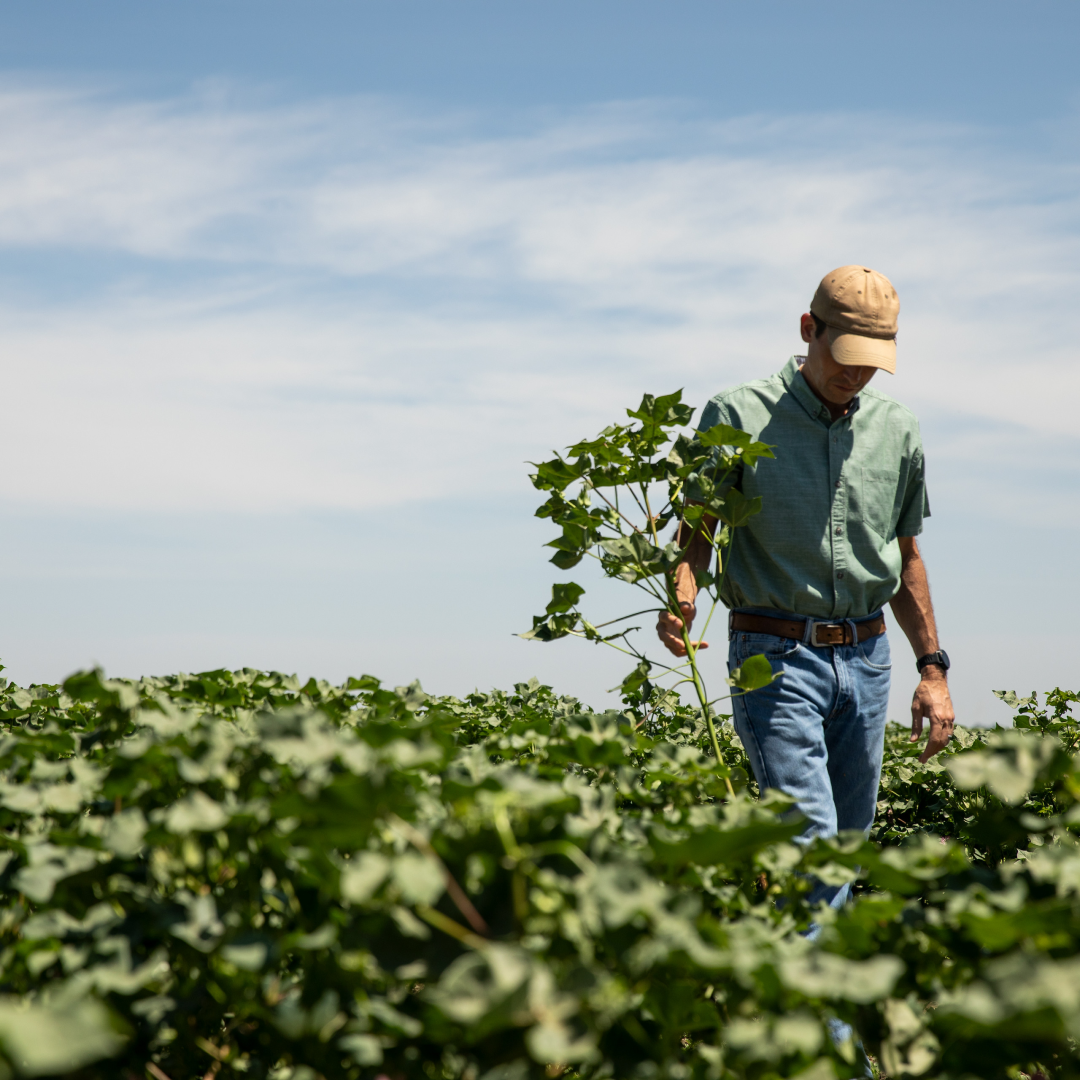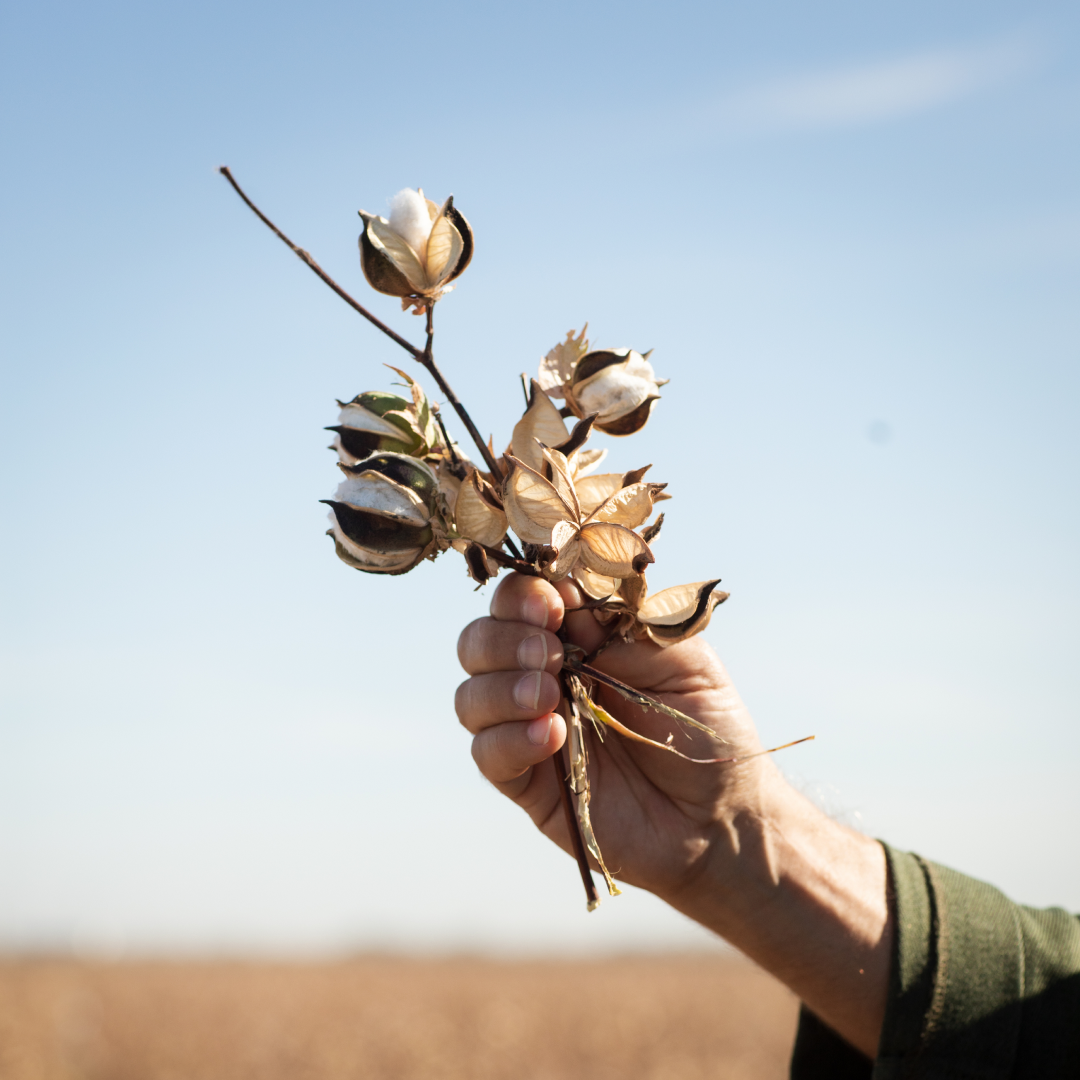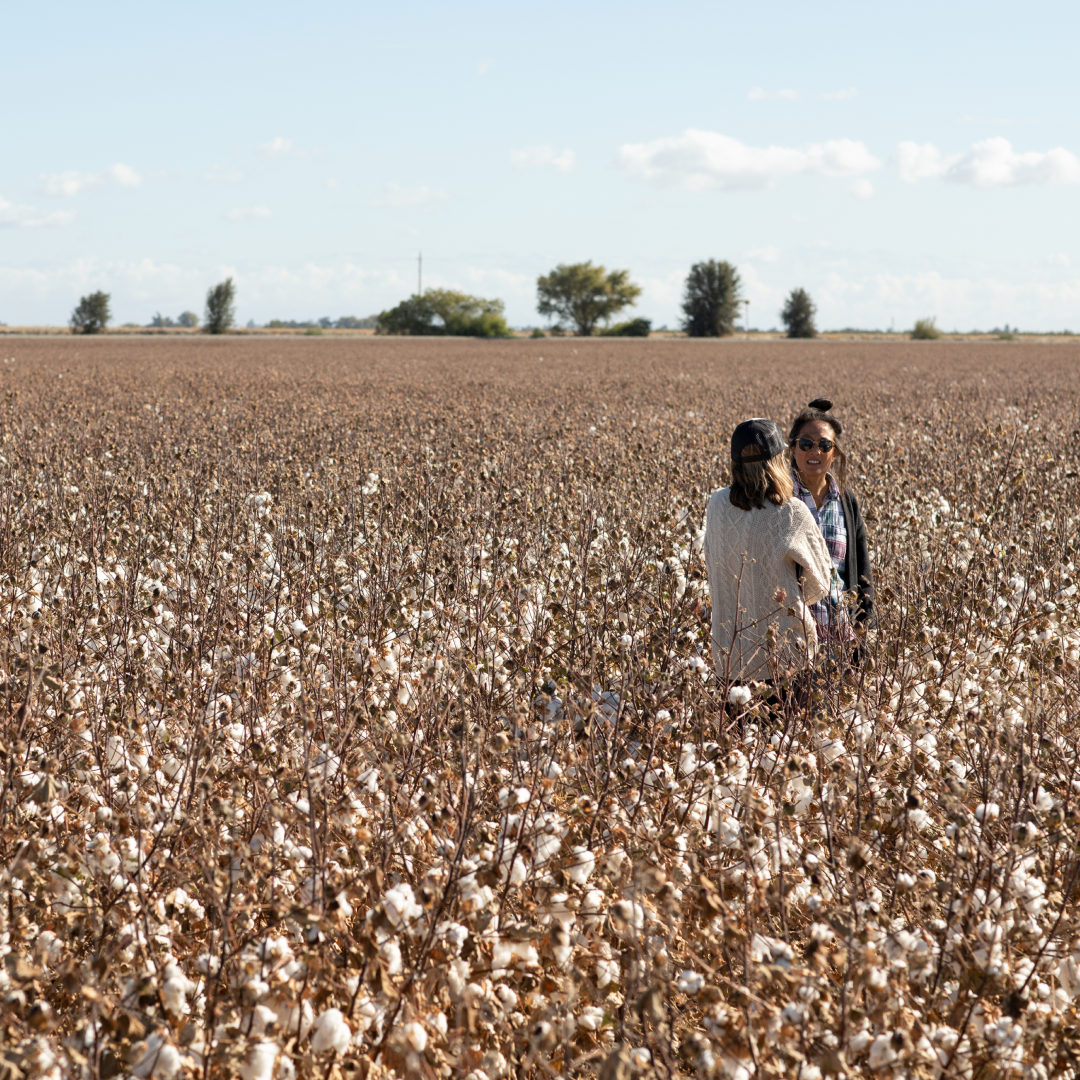Stella McCartney, Allbirds, Reformation and Pangaia link up with NFW to push regenerative agriculture forward
NFW is teaming up with Stella McCartney, Allbirds, Pangaia, and Reformation to produce the most traceable and low-carbon MIRUM® ever made. MIRUM already emits up to 10x less greenhouse gas emissions than conventional leather and plastic leather alternatives, but we know we can still do better. Through this collaboration with groundbreaking sustainability leaders, we will produce MIRUM with a Climate Beneficial™ cotton backer sourced from the California Cotton and Climate Coalition (C4), a project of Fibershed, to shrink MIRUM’s environmental footprint even more and steward regenerative agricultural practices.
We’re committed to using 100% natural inputs instead of fossil fuels in all our materials. But we know that agriculture isn’t perfect.
That’s why in September we joined C4, a coalition of 11 companies across multiple industries pushing forward a new model of production that helps regenerate soil health, build relationships with farmers, balance the carbon cycle, and transform the material economy to work in harmony with earth’s biological systems.
As part of the coalition, we are working directly with two farms in California to grow cotton that is both Climate Beneficial™ and farm-forward. The goal of the project is to seed regenerative practices that rebuild soil health and draw down carbon. We’ll use the cotton we purchase as the fabric backer on a special collection of MIRUM® that will be brought to life in products from Stella McCartney, Allbirds, Pangaia, and Reformation.
“We partnered with C4 to work side by side with leaders who are making the transition to regenerative agriculture in the textile industry and fashion space possible,” said NFW Vice President and MIRUM General Manager Oihana Elizalde. “The partnership allows NFW to deliver a product that sets a new sustainability standard towards reversing climate change and we’re so appreciative of our brand partners who make this all possible.”
Stella McCartney is leading the change in fashion through her use of innovative, sustainable materials. “Since I launched Stella in 2001, I have dreamed of a plant-based alternative to leather created in harmony with nature. MIRUM is that vegan vision brought to life – so realistic without any plastic, on a regenerative cotton backing that helps to improve biodiversity and soil health while sequestering carbon to fight climate change,” said Stella McCartney. “In collaboration with SOS Fund, my hope is we can bring this incredible material innovation to an industry-wide scale and inspire other fashion houses to join our conscious movement; one that crafts uncompromising, desirable products that do not harm animals and give back to Mother Earth.”
What is regenerative agriculture?
As the world works to combat climate change, one of the most important tools for carbon capture is right below our feet: soil.
Carbon on our planet lives in a balance between two pools: atmospheric and terrestrial. Excess atmospheric carbon in the form of CO2 is a main contributor to global warming. Terrestrial carbon in the form of soil organic matter is essential for ecosystem’s water holding capacity, soil biology and fertility. Climate change is the result of an imbalanced carbon cycle, we currently have too much carbon in our atmosphere and not enough in our soils. Industrial farming practices in many parts of the world have degraded soil health and released historic soil carbon stocks into the atmosphere. Soils in California for instance have lost over half of their historic carbon stocks, contributing to climate change. As defined by Project Drawdown, “Regenerative agriculture enhances and sustains the health of the soil by restoring its carbon content. This improves productivity and removes carbon dioxide from the atmosphere.”
Regenerative agriculture is an umbrella term for multiple agricultural practices that center the long-term well-being of farmers, land, water, soil and the farm ecosystem. Many of these practices come from indigenous techniques and are regionally specific. They restore nature’s capacity for self-renewal while increasing on-farm productivity. Some desired outcomes from these practices are increased soil water-holding capacity and carbon stocks, increased biodiversity, and increased resilience to extreme weather and market fluctuations.
In practicing regenerative agriculture, there is a shift in values: from a farm as a medium to optimize yields from the highest value crop to viewing a farm as an ecosystem with diverse, mutually beneficial interactions between plant, animal, fungal, microbial, and human life.
So why isn’t regenerative agriculture more common? A key obstacle in the transition to adopting regenerative farming practices is the financial risk while experimenting with new farming practices.
“Agriculturalists often work with very tight financial margins and have to make difficult decisions on a day-to-day basis... including the weather, animal health, equipment function, and labor. These constraints impede the implementation of innovative practices, especially if they require cash or capital investments,” explains Rebecca Burgess, Executive Director at Fibershed.
By investing in C4 cotton, NFW is providing the financial stability necessary to enable these farms to incorporate regenerative practices and lead the way by example. We are also making purchasing commitments with the farms in advance, this is crucial: a lack of commitment is seen as a key bottleneck in the growth of organic or regenerative agriculture.
The farms growing cotton as part of the California Cotton and Climate Coalition are in the process of transitioning to regenerative practices. Chico State University is conducting research on the project to monitor impact and identify best practices that can be scaled and shared with other farms.
How is Climate Beneficial™ cotton different?
C4 is a coalition of companies who currently sell cotton goods and are working pre-competitively from farm to fabric, to invest in learning how to grow Climate Beneficial™ cotton in the unique Californian bioregion. This group was founded to create a structure for investing in regionally grown, Climate Beneficial™ cotton, catalyzing critically important shifts in land stewardship and prioritizing working with domestic milling partners.
C4 is a relationship building project where farmers, merchant and gin operators, researchers, farm technical service advisors, nonprofit organizers, family foundation funders, brands, designers, textile developers, spinners, and textile mills are working together to bring a new agronomic and textile development system forward that is generating natural material goods for the marketplace. By working together, risk is shared by all partners, which is critical to implementing innovative practices on-farm, in the mill, and in the development of new goods.
Cotton supply stakeholders are normally not in communication as textile development traditionally happens, with brands purchasing fabric from a contract manufacturer who has purchased yarn from a spinner (another contract manufacturer) who has purchased cotton from a merchant. This allows for little-to-no transparency back to the farm. As an example, C4’s in-person cotton gin tour revealed that a veteran gin operator had never — in his 30 years of business — met a brand that utilized the cotton coming out of his facility. C4 is working in the opposite direction: farm-forward.
Through the coalition, brands are sourcing farm-forward from acreage that has been managed using conventional practices and chemical inputs which is now undergoing a transition to biological, soil building, and climate beneficial practices. Acreage involved in this project is managed by two farms: Bowles Farming Company in Los Banos, CA and Stone Land Company in Stratford, CA. Both sites are being monitored for a range of soil health indicators.
Bowles Farming Company is collaborating on a site-specific three-year research trial with Chico State University’s Center for Regenerative Agriculture and Resilient Systems.
The project goals are to rebuild soil carbon stocks, increase the soil’s capacity to hold water, and significantly reduce synthetic inputs. The research and learnings from this project can create a roadmap for the additional 187,000 acres of cotton currently growing in California.
The California Cotton and Climate Coalition aims to build capacity within all stakeholders to grow, source, and develop climate beneficial, farm-forward textiles and supply chains in the future without the help of the coalition. C4 is led by Fibershed in partnership with White Buffalo Land Trust, Torus, Materevolve, Chico State University, Agri Technovation, Carbon Cycle Institute, Bowles Farming Company and Stone Land Company.
What does this mean for MIRUM?
Earlier this year, NFW released the first life cycle assessment of MIRUM. With a carbon footprint an order of magnitude lower than the competition, MIRUM is in a category all its own. But at NFW, we are always striving to push boundaries and set new standards for sustainability, which is what ultimately led us to C4.
Our LCA demonstrated that our highest-impact ingredient in MIRUM was our cotton fabric backer. From this information, we prioritized identifying and integrating more sustainable backing options into our supply chain.
Through C4, we will be able to directly measure the impact of the cotton we source and support farming that goes beyond simply reducing carbon emissions to instead actually capturing carbon via soil sequestration. The result will be the most traceable and low-carbon MIRUM ever made.
We look forward to sharing updates on the forthcoming product launches from Stella McCartney, Allbirds, Pangaia, and Reformation as well as updates from the activities on the C4 farms. Subscribe to our blog to make sure you don’t miss a thing.



